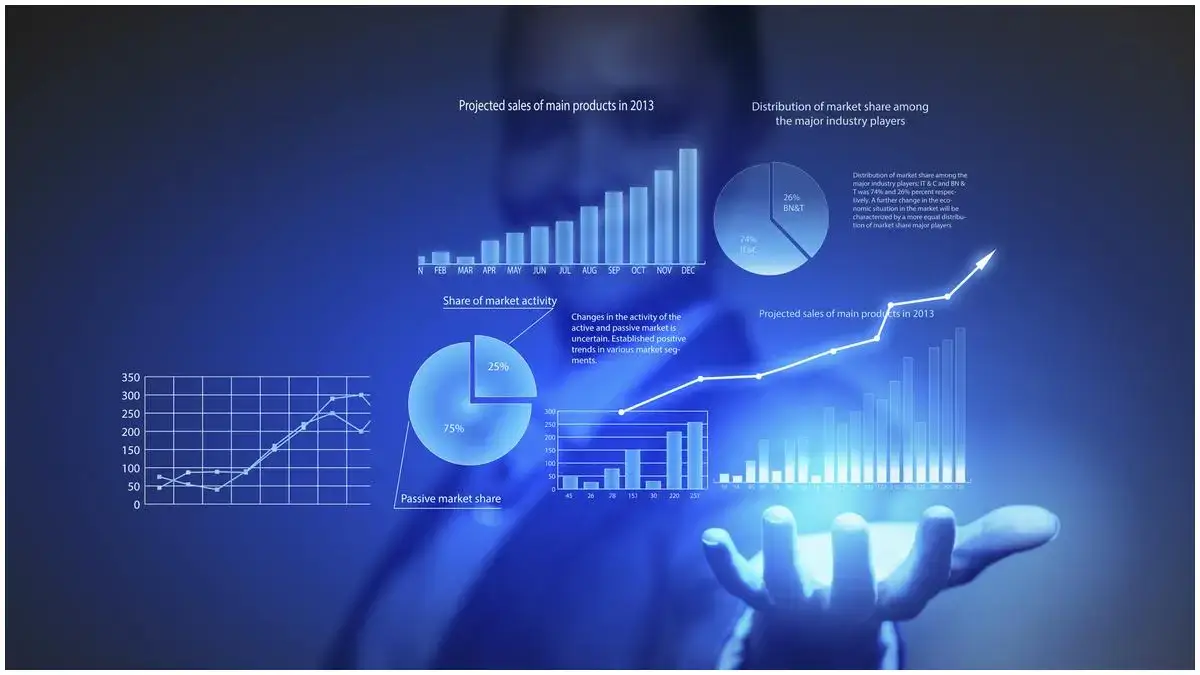
The Role of Data in Modern Business Decision-Making
As a business owner or manager, you’ve likely heard the buzz about big data and analytics. But what does it really mean for your bottom line? In this article, I’ll dive deep into the transformative power of data in modern business, exploring why it matters, how to harness it effectively, and what the future holds. Buckle up as we embark on a journey through the data-driven revolution that’s reshaping the business world as we know it.
Table Of Content
Key Data Sources for Businesses
In today’s data-driven business landscape, understanding where to find valuable information is crucial. Businesses can retrieve external marketing data by accessing a variety of sources, each offering unique insights that can shape strategic decisions. Let’s explore some key data sources that modern businesses rely on to stay competitive and informed.
61% of executives believe data analytics is vital for their organization’s competitive advantage. This statistic underscores the importance of identifying and leveraging the right data sources. So, what are these sources, and how can businesses tap into them?
One of the primary sources of business data comes from customer interactions. This includes purchase history, website visits, customer service inquiries, and social media engagements. By analyzing this data, companies can gain valuable insights into customer preferences, behavior patterns, and pain points.
Market research is another crucial source of data from business operations. This can involve surveys, focus groups, and competitor analysis. These methods provide a broader perspective on industry trends, consumer sentiments, and market opportunities. Financial data is a goldmine for businesses, enabling not only better resource allocation but also forming the backbone of strategic financial planning, guiding decisions on growth and investments. This includes sales figures, profit margins, operational costs, and investment returns. By closely monitoring these metrics, companies can make informed decisions about resource allocation, pricing strategies, and growth initiatives.
External data sources, such as government databases, industry reports, and economic indicators, also play a vital role in business decision-making. Businesses can retrieve external marketing data by accessing public datasets, subscribing to market research services, or partnering with data providers.
Social media platforms have become invaluable sources of data for businesses. They offer real-time insights into consumer opinions, trends, and brand perceptions. By monitoring social media conversations, companies can quickly adapt their strategies to meet changing customer needs.
IoT (Internet of Things) devices are emerging as a rich source of data for businesses. From smart factories to connected products, these devices generate vast amounts of data that can be used to optimize operations, improve product design, and enhance customer experiences.
Website analytics provide crucial data about online customer behavior. This includes information about traffic sources, user engagement, conversion rates, and more. By analyzing this data, businesses can refine their digital strategies and improve user experiences.
Partner and supplier data can also offer valuable insights. This might include information about supply chain efficiency, product quality, or market demand. By collaborating and sharing data with partners, businesses can create more robust and responsive supply chains.
Employee data is another often overlooked source of valuable information. This can include productivity metrics, skills assessments, and feedback surveys. By analyzing this data, businesses can improve workforce management, enhance employee satisfaction, and boost overall organizational performance.
Lastly, environmental and geospatial data are becoming increasingly important for many businesses. This can include weather patterns, demographic information, or location-based data. Such information can be crucial for companies in sectors like agriculture, retail, or logistics.
In conclusion, the key to leveraging data for business success lies in identifying and integrating multiple relevant data sources. By combining internal and external data, businesses can gain a comprehensive view of their operations, customers, and market environment. This holistic approach to data collection and analysis is what separates data-driven companies from their competitors, enabling them to make more informed decisions and stay ahead in today’s fast-paced business world.
Integrating Financial Data for Better Forecasting
Integrating financial data has become vital for accurate business forecasting. It involves combining data from various financial sources, such as income statements, balance sheets, cash flow reports, and market indicators, to offer a more complete view of company performance.
The benefits of this integration are significant. By analyzing diverse data sets together, businesses can uncover patterns that wouldn’t be visible in isolation. For example, merging sales data with economic trends could highlight how specific products perform under certain market conditions. This enables businesses to adjust strategies like inventory or marketing for better outcomes.
Advanced analytics and AI tools like Doublefin play a significant role by rapidly processing large datasets to identify trends and predict future performance. At the same time, real-time integration allows businesses to update forecasts dynamically as conditions change. This flexibility is precious in today’s fast-paced business environment.
Scenario planning also becomes more effective. With integrated data, businesses can model different future scenarios, helping them prepare for various risks like inflation or market downturns.
However, ensuring data quality and security is crucial for success. Poor data governance can lead to inaccurate forecasts, and privacy concerns must be addressed when handling sensitive financial data.
Financial data integration improves forecasting accuracy, agility, and strategic decision-making, providing a competitive edge in a dynamic business landscape.
Using Data for Performance Tracking and Accountability
In the modern business landscape, the importance of analyzing data cannot be overstated, especially when it comes to performance tracking and accountability. Data analysis in business has become a cornerstone for measuring success, identifying areas for improvement, and holding teams and individuals accountable for their contributions to organizational goals.
40% of businesses fail to achieve their intended outcomes due to poor data quality and lack of data-driven decision-making. This startling statistic underscores the critical role that data plays in achieving business objectives. By leveraging data effectively for performance tracking and accountability, companies can significantly improve their chances of success.
One of the primary benefits of using data for performance tracking is the ability to set clear, measurable objectives. Instead of relying on vague goals, businesses can establish specific key performance indicators (KPIs) that are directly tied to data points. This approach allows for more precise goal-setting and makes it easier to track progress over time.
Data-driven performance tracking also enables real-time monitoring of business activities. With the right analytics tools in place, managers can access up-to-date information on various aspects of their operations, from sales figures to customer satisfaction ratings. This immediate feedback loop allows for quick adjustments and interventions when performance starts to slip.
Accountability is another crucial aspect that data analysis in business can enhance. When performance metrics are clearly defined and consistently measured, it becomes easier to hold individuals and teams responsible for their results. This transparency can foster a culture of ownership and drive employees to take more initiative in improving their performance.
Here are some key ways businesses can use data for performance tracking and accountability:
- Implementing dashboards: Visual representations of key metrics can provide at-a-glance insights into performance across different departments.
- Regular reporting: Scheduled reports can help track progress over time and identify trends or patterns in performance.
- Predictive analytics: By analyzing historical data, businesses can forecast future performance and set realistic targets.
- Benchmarking: Comparing performance data against industry standards or competitors can provide valuable context for evaluating success.
- Performance-linked incentives: Tying bonuses or other rewards to data-driven performance metrics can motivate employees to meet or exceed targets.
The importance of analyzing data extends beyond just tracking numbers. It’s about deriving actionable insights that can drive business improvement. For instance, by analyzing customer feedback data alongside sales figures, a company might identify correlations between certain product features and customer satisfaction, leading to targeted product improvements.
Moreover, data-driven performance tracking can help identify both top performers and underperformers within an organization. This information can be used to recognize and reward high achievers and provide targeted support and training to those who may be struggling.
However, it’s crucial to remember that the effectiveness of data-driven performance tracking and accountability hinges on the quality and relevance of the data being analyzed. Businesses must invest in robust data collection and management systems to ensure they’re working with accurate, up-to-date information.
Additionally, fostering a data-literate culture within the organization is essential. Employees at all levels should understand the importance of data in decision-making and be trained in basic data analysis skills. This widespread data literacy can lead to more informed decisions across the board and a greater appreciation for the role of data in driving business success.
Using data for performance tracking and accountability is not just a best practice – it’s a necessity in today’s competitive business environment. By embracing data-driven approaches, businesses can set more precise goals, monitor progress more effectively, and create a culture of accountability that drives continuous improvement. As we move further into the digital age, the companies that master the art of data analysis in business will be the ones that thrive and outperform their competitors.
The Future of Data in Business
The future of data analytics in business is both exciting and transformative. The exponential growth of data and evolving technology will reshape how companies operate and interact with customers. Key trends that will define the future of data analytics for companies include the rise of real-time processing and analysis, emphasis on predictive and prescriptive analytics, and the integration of structured and unstructured data. Other trends to consider are the democratization of data analytics, ethical considerations, and the integration of data analytics into core business processes. As data volumes continue to grow and analytics capabilities advance, businesses that can effectively leverage these tools will be well-positioned to thrive in an increasingly competitive landscape.





